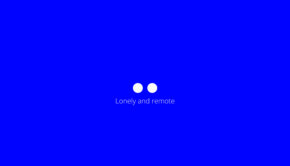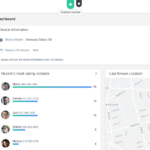Our New Normal Isn’t Working From Home, It’s Way Better!
With large swathes of our workforce furloughed, working from home or jobless, we’re beginning to glimpse “a new normal” emerging from the shellshocked carnage of our economy.
One thing is clear. Not only our private lives have been affected. Our professional working life will be permanently altered by the COVID-19 pandemic. Working from home policies and pitfalls are a pivotal part of any conversation about the commercial impact of the corona virus.
Remote work has proved to be a lifeline for economic and business continuity. Our news feeds have been flooded with predictions and reports debating where knowledge workers, always those best placed to work remotely during lockdowns will be commuting to or from in the future, be it the home office or an office cubicle.
A Home Office Is The New ‘Black’
Industry prognostications are increasingly pointing to the option of working from home as becoming a permanent strategy. Despite being swamped by a global pandemic, employees are reporting enhanced productivity and greater job satisfaction while working from home.
For employers, this potentially will translate into a significant profit uptick as well as substantially reduced operating costs as the demand for costly office space declines. By encouraging working from home, businesses then enjoy additional overhead savings in the form of reduced power bills, hardware costs and office supply expenses.
With virtual work gaining favour, it’s easy to understand why a remote or distributed workforce may provide the underpinning architecture for how work is organized in the future.
If work is something you do, rather than somewhere you go, why go anywhere? Home offices are emerging as a workable indeed, an attractive alternative to colocated offices or even hot-desking or hubs.
Location is Increasingly Irrelevant In The Knowledge Economy
If the COVID-19 pandemic has demonstrated anything, its shown knowledge work isn’t location-specific. For many knowledge workers with roles relying on mobile tools including laptops, wi-fi, and software, location is reduced to a daily preference, rather than a workplace commitment.
As our economy gradually emerges from the pandemic shutdown, the conversation is increasingly going to be about how we are going to work moving forward, rather than where we are going to work.
Chances are, we will discover the nature of work in the future lies in harnessing asynchronous communication, digital transfer technology, virtual workplaces, group messaging apps and outcomes-focused performance management.
These virtual workplace enablers are increasingly what defines and enable remote work. They are the foot soldiers of the home office and increasingly will comprise the ‘new normal’ of our distributed workplaces.
The Rise of Asynchronous Communication
Geographically distributed teams demand a solution to time zone gaps, schedule conflicts or interruptions from family members or bored household pets. Asynchronous communication channels like Google docs, Slack and short videos, transform team dynamics, creating a continuous flow of transparent shared information enabling team participants to pick up right where they left off, ten minutes or ten days ago.
Digital Transfer Technology
For many marketing-driven organizations, having access to their library or archives is a key element of their marketing and communications activity. Transitioning to a geographically dispersed workforce demands these resources frequently held on their original VHS tapes, audiotapes and even 8mm file stock be accessible over the Cloud or other network.
VHS to Digital transfer services provides ready access to your content library. It also has the benefit of saving your organization’s content for posterity.
The Evolution of Our Virtual Workplaces
If work is something we do, rather than somewhere we go, then there is an implied need for the content, technology, tools and resources to enable a remote workforce to deliver their outcomes.
As we decentralize our workforce into a network of home offices, so too does that workforce need access to the resources they would habitually have available in a conventional workplace.
The shift to the Cloud and Virtual Offices and away from cubicles and filing cabinets facilitates access to the content documents, people, and decisions regardless of location, be it at a client’s office or a team member’s home office
One obvious step is to usher in virtual workstations. Cloud hosting technology provides home offices with access to their organisation’s computer interface and operating system from any device and at any time.
Virtual desktops support team flexibility and recognize mobility, while significantly enhancing team productivity. It’s business continuity for the Cloud age.
Internal Email Is Giving Way To Team Messaging Apps
With demand rising to support a distributed workforce’s communication needs, email is becoming a serious drag on speedy and efficient communication. It’s also a major time waster and a place where information goes to die,
Team chat has surprised many managers with its ability to nurture real-time communication between individual staff and their teams.
Performance Management For A Remote Workforce
Conventional performance management methods designed to cater for office environments frequently struggle to move beyond sensory-based perceptions of how an employee is performing.
All-too often productivity is signalled by ringing phones, meetings, or seeing a staff member working diligently at their desk. Leadership in these environments is typically shown by arriving early and leaving the office late. Similarly, progress on a project is often reinforced by casual face-to-face conversations over coffee.
In the absence of these visual guides to performance, measuring productivity can be a challenge. Many of our performance management tools rune the tape over activity rather than actual accomplishment.
Remedying this gap will involve management drilling down on results, including core deliverables, project updates and reports and learning outcomes. These techniques enable team members to demonstrate their productivity, with or without line management supervision.
Final Observation
Our ‘new normal’ isn’t simply business as usual without the inconvenience of having to schlep into an office. It has reoriented the nature of work around the actual work rather the office environment itself. As our teams’ communication and collaboration skills evolve, we can expect to discover new ways of working thanks to via asynchronous communication, distributed teams and virtual workplaces. The workplaces that emerge from COVID-19 may be more results-based and focused less on where we work, instead of enjoying the buzz from our contributions to our host organizations.
















